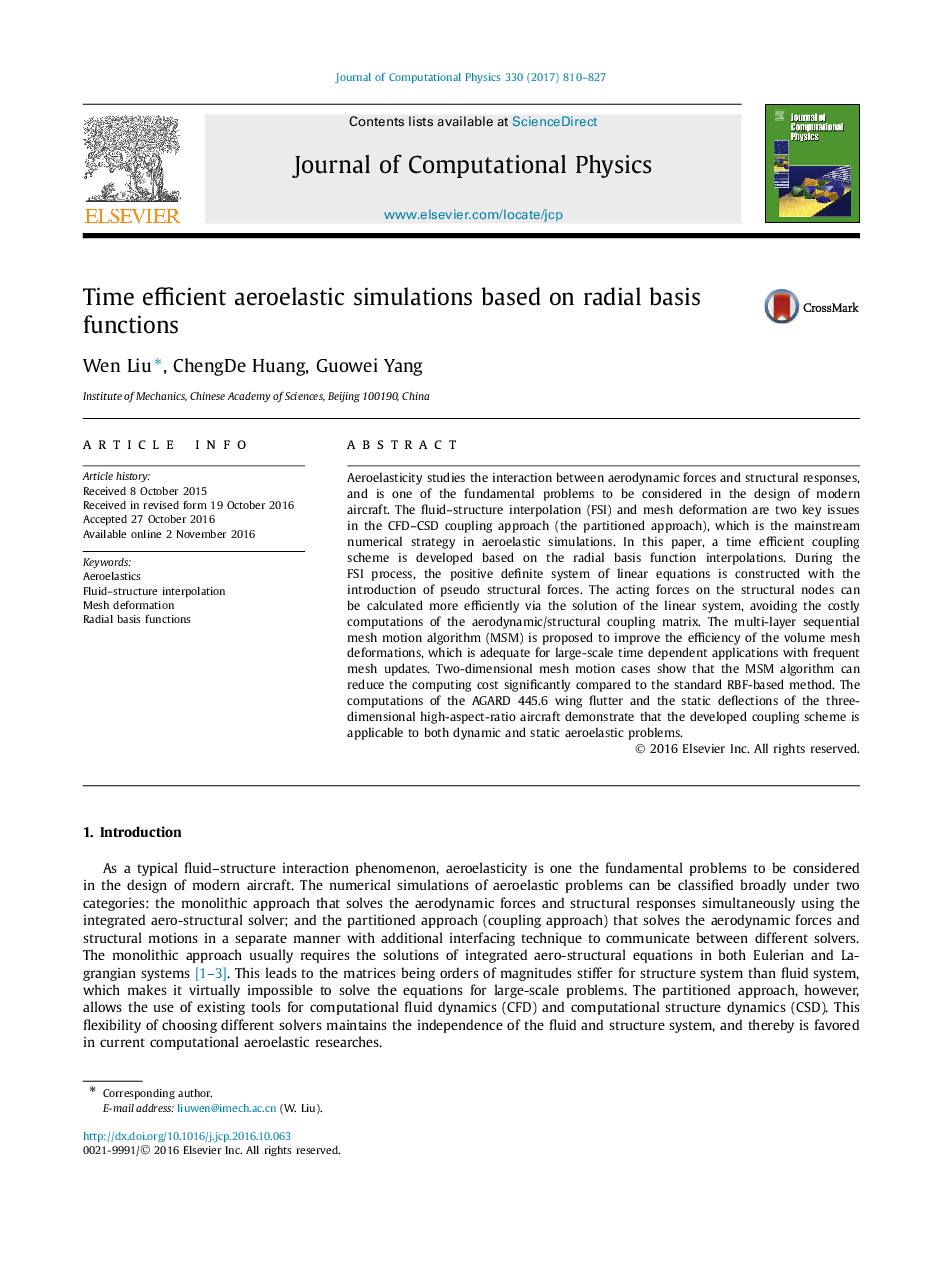| Article ID | Journal | Published Year | Pages | File Type |
|---|---|---|---|---|
| 4967779 | Journal of Computational Physics | 2017 | 18 Pages |
Abstract
Aeroelasticity studies the interaction between aerodynamic forces and structural responses, and is one of the fundamental problems to be considered in the design of modern aircraft. The fluid-structure interpolation (FSI) and mesh deformation are two key issues in the CFD-CSD coupling approach (the partitioned approach), which is the mainstream numerical strategy in aeroelastic simulations. In this paper, a time efficient coupling scheme is developed based on the radial basis function interpolations. During the FSI process, the positive definite system of linear equations is constructed with the introduction of pseudo structural forces. The acting forces on the structural nodes can be calculated more efficiently via the solution of the linear system, avoiding the costly computations of the aerodynamic/structural coupling matrix. The multi-layer sequential mesh motion algorithm (MSM) is proposed to improve the efficiency of the volume mesh deformations, which is adequate for large-scale time dependent applications with frequent mesh updates. Two-dimensional mesh motion cases show that the MSM algorithm can reduce the computing cost significantly compared to the standard RBF-based method. The computations of the AGARD 445.6 wing flutter and the static deflections of the three-dimensional high-aspect-ratio aircraft demonstrate that the developed coupling scheme is applicable to both dynamic and static aeroelastic problems.
Related Topics
Physical Sciences and Engineering
Computer Science
Computer Science Applications
Authors
Wen Liu, ChengDe Huang, Guowei Yang,
